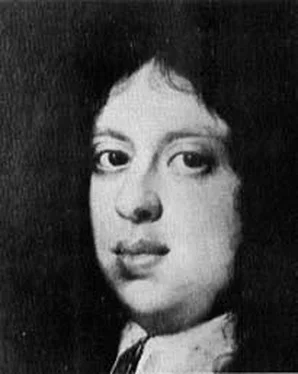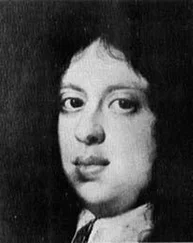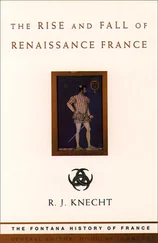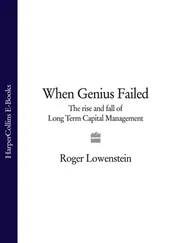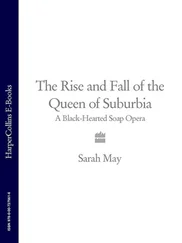One of the most popular of all Florentine festivals was that of Calendimaggio , May Day. For this, the young men got up early to hang branches of flowering shrubs, decorated with ribbons and sugared nuts, on the doors of their sweethearts’ houses; and the girls, wearing pretty frocks and carrying flowers and leaves, danced to the music of lutes in the Piazza Santa Trinità. Then there was the festival of St John the Baptist, patron of the city, when all the shops were decorated with streamers and banners; when riderless horses, with spiked iron balls hanging at their sides, raced from Porta al Prato down the Via della Vigna through the Mercato Vecchio and the Corso to Porta alla Croce; when processions of canons and choristers, of citizens dressed as angels and saints, and of huge decorated chariots passed through the streets bearing the Cathedral’s sacred relics, which included a thorn of the Holy Crown, a nail of the Holy Cross, and the thumb of St John; when the Piazza del Duomo was covered with blue canopies emblazoned with silver stars beneath which votive offerings of painted wax were taken to the Baptistery; and when, in the Piazza della Signoria, the most elaborate gilded castles, symbolizing the towns which were subject to Florence, were carried on wagons past the banners fluttering on the balcony of the Palazzo.
The Lenten festivals were naturally more sombre. On the Wednesday of Passion Week, the Matins of Darkness was held in the Cathedral. All the lights, save a single candle on the altar, were snuffed out; and in the gloom the clergy and congregation ritually beat on the floor with willow rods. On Maundy Thursday, the Archbishop washed the feet of the poor. And on Good Friday, at three o’clock in the afternoon, the vergers of all the churches and convents went out into the streets with wooden clappers summoning the people to kneel and pray wherever they were and whatever they were doing. Afterwards Christ’s funeral was enacted, through streets hung with black. A long procession of monks carried a cross and a scourging post, a crown of thorns, a spear and a sponge, together with every object mentioned in the stories of the Passion, from hammers and nails to purple robe and dice. Behind them was borne the figure of the dead Christ beneath a canopy of black velvet and gold; then came the Virgin Mary, clothed in black, a white handkerchief in her hand. The next day, Holy Saturday, all was bright once more. The black cloth was stripped from the altar of the Cathedral and replaced with gold. The Archbishop sang Gloria in Excelsis; and as doves released from the Cathedral fluttered to the rooftops of the Piazza del Duomo, the bells in the campanile and all over Florence rang out triumphantly.
Lorenzo and Giuliano delighted in all these festivities, in helping to design the tableaux, the backcloths and trappings, the sculptures and armour, the costumes of the performers and the elaborate harnesses and disguises of the scented animals. They delighted, too, in composing dramas and pageants into which were introduced those classical allusions so treasured by their contemporaries; and in discussing with scholars and poets the speeches which were to be delivered, the songs which were to be sung, the extravagant verse expositions of the allegorical masques.
Every distinguished visitor to the city was sure to be entertained extravagantly during his stay. Thus, when a great procession of noblemen from the south rode into Florence on 22 June 1473 as escort to the King of Naples’s daughter, Eleonora, who was on her way to be married to Duke Ercole of Ferrara, the Florentines eagerly seized the opportunity to welcome them in their customary style. They cheered and clapped as the Princess, dressed in black velvet and adorned with’ numberless pearls and jewels’, rode through the Porta Romana, across the Ponte Vecchio and up to the Palazzo della Signoria where she received an address from the assembled Priori before proceeding to the Medici Palace to have dinner with Lorenzo, Giuliano and their numerous guests. The next day a masque and brilliant procession were followed by a firework display; and on 24 June there was fête champêtre on the Prato, the meadow which stretched down to the banks of the Arno, where the guests ate strawberries, walked in the green grass by the water’s edge, and danced in the sunlight, jumping and leaping about in the energetic Florentine manner.
These festivities, splendid and exciting as they were, were not exceptional. But it was everywhere agreed that the tournament held in Florence in 1475 was unique. An even more impressive spectacle than the giostra of 1469, this tournament was held in honour of Giuliano, by then twenty-two years old, tall, dark-haired, athletic and universally admired. Giuliano’s giostra took place in the Piazza Santa Croce where once again the lovely Lucrezia Donati was crowned ‘Queen of the Tournament’, as she had been in 1469, and where the even more strikingly beautiful Simonetta Cattaneo, the consumptive, dying young wife of Marco Vespucci, a woman with whom Giuliano himself was said to be deeply in love, was led to the throne of the ‘Queen of Beauty’. Giuliano appeared before her wearing her favour on one of a series of specially designed costumes which were believed to have cost in all no less than 8000 florins. His standard, designed by Botticelli, depicted Pallas, goddess of wisdom and war, in a golden tunic and armed with spear and shield, looking upon Cupid who stood bound to the bole of an olive tree with his bow and broken arrow at his feet. Like his brother in the previous contest, Giuliano was awarded the first prize which he accepted in a helmet, designed in anticipation of his victory, by Verrocchio.
This famous tournament was the inspiration for the earliest literary masterpiece in Italian of Angelo Ambrogini, known from his birthplace as Poliziano, the son of a distinguished Tuscan lawyer who, as a warm supporter of the Medici family, had been murdered by conspirators plotting the death of Piero. Shortly after his father’s murder, Poliziano had been brought to Florence and his education paid for by the Medici: he had studied Latin under Cristoforo Landino, Greek under Argyropoulos and Andronicos Kallistos, and philosophy under Marsilio Ficino. He was invited to stay for as long as he liked at the Medici Palace, and later given a villa by the family. By the time he was eighteen he was a classical scholar of formidable learning and a poet of extraordinarily precocious talent. His Stanze delta Giostra di Giuliano de Medici established him as the finest Italian poet since Boccaccio.
The tributes which Poliziano paid to Giuliano and, more particularly, to Lorenzo were not merely the courtly allusions which every generous patron might well have felt his due. Lorenzo was, indeed, ‘the laurel who sheltered the birds that sang in the Tuscan spring’. To his villas at Fiesole, Cafaggiolo and Careggi he invited artists, writers and scholars to talk with him, to read aloud with him, to listen to music, to discuss classical texts and philosophical mysteries. Sometimes the company met at the Abbey of Camaldoli 4where, for four days in 1468, Lorenzo and Giuliano discussed such matters as man’s highest vocation, the nature of the summum bonum and the philosophic doctrines to be found in the Aeneid , with various members of the Platonic Academy including Marsilio Ficino, Cristoforo Landino, Leon Battista Alberti and three merchants of intellectual tastes, Alamanno Rinuccini, and Donato and Piero Acciaiuoli.
‘The second day after my father’s death,’ so Lorenzo recorded in his memoirs, ‘the principal men of the city came to our house to console us and to encourage me to take on myself the care of the State, as my father and grandfather had done.’ Among the leaders of the delegation was Tommaso Soderini, who had opposed his brother Nkcolò’s attempted coup against Piero, and who, as the husband of a Torna-buoni, liked to think of Lorenzo as his nephew. With him were several members of the Pitti family who, at a meeting of about seven hundred supporters of the existing regime held at the convent of Sant’ Antonio the day before, had made amends for Luca Pitti’s part in the coup by strongly supporting Soderini in his call for a unified request to Lorenzo. Lorenzo listened to the delegation with becoming modesty.’ Their proposal was naturally against my youthful instincts,’ he protested,
Читать дальше
